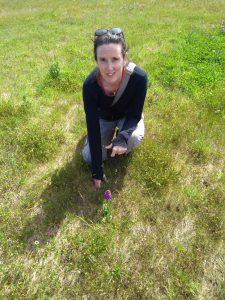As an ecologist, my heart sinks when I see brown areas that have been sprayed with herbicide in advance of putting down a wildflower seed mix. I know that in most cases, it is done with the intention of wanting to help biodiversity. I also know that between chemicals and seeds, it comes at some expense.
Spraying with chemicals is detrimental to above and below ground biodiversity. The seed mix might look good to humans for a few months in the year it’s planted. However, the unintended consequence is that you are creating bare ground, which is then colonised in future years by our big robust wild plants. That’s what nature intended them to do! Give plants like Thistles, Docks, Ragwort and Hogweed a chance, and they’ll appear. They prevent soil erosion and run off. Ironically, they will also probably provide more food for pollinators than the seed mix, but in very public urban spaces they are going to look unsightly to many people as they’re not used to seeing them.
Unless you’re planning to get into a spraying/seeding cycle which is costly and destructive to biodiversity, this is the consequence you risk. Spraying is detrimental, and the wildflower seed mixes are unregulated and usually not what biodiversity wants or needs. Where it’s a grassy area or verge, don’t spray it off. It’s much better for biodiversity to move to a reduced mowing regime where the cuttings are lifted. This will allow these areas to naturally become more flower rich over time, with plants from the natural soil seed bank that are meant to be there.
In very public urban areas where you want to overlap benefits to biodiversity with colour for humans, consider planting a mix of low maintenance pollinator-friendly perennials to flower across the season. They will provide pollen and nectar for flower-visiting insects. With light annual maintenance, these areas can last for up to a decade, and offer a much better, cheaper, and more sustainable solution.

Úna FitzPatrick is Chief Scientific Officer in the National Biodiversity Data Centre and oversees the All-Ireland Pollinator Plan.


